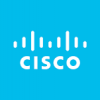Reading Time: 3 minutes After the VMware vExpert vSAN 2017 and VMware vExpert NSX 2017 awards, this year a new vExpert category has been added: the VMware vExpert Cloud. Like for other technologies vertical, these vExperts has demonstrated significant contributions to the community and a willingness to share their expertise with others. Contributing is not always blogging or Twitter as there are many public speakers, book authors, scriptwriters, VMUG leaders, VMTN community moderators and internal champions among this group.
Browsing Posts published in October, 2017
Reading Time: 3 minutes Seems that there are still some issues with vSphere 6.5, with a possible PSOD (Purple Screen Of the Death) after upgrade to 6.5U1 on ESXi hosts using 10 Gbps NICs. The VMware KB 2151749 describe this issue and explains that this occurs because Netqueue commit phase abruptly stop due to the failure of hardware activation of a Rx queue. As a result, Internal data-structure of the Netqueue layer’s could go out of sync with the device and cause PSOD.
Reading Time: < 1 minute VeeamON is the big event from Veeam (actually only in the US) and VeeamON Tour is usually a smallest (one day) event around the world. But, like happened in the past year, on December 5 there will be also a VeeamON Tour Virtual event: coming right to your desktop, an event on the future of Availability.

Reading Time: < 1 minute Neil Anderson, from Flackbox, has build an amazing free Cisco CCNA Lab Guide recently which can be used to pass the CCNA exam or as a configuration reference for Cisco routers and switches. There’s a few free guides online but they all cover old out of date exam topics and aren’t great quality, but this is guide really complete (350+ pages), up to date, with good quality and simple, which people can use completely for free.

Reading Time: 2 minutes One of the reasons why my blog is starving in the last months is that I’ve started a huge personal project that consumes all my spare free time. This project is a book on VMware vSphere 6.5, really ambitious considering that will be a “Mastering” book, but the title and part of the content were not negotiable.
Reading Time: 2 minutes The latest Adobe Flash update (note that the update has been included also in Microsoft Update) with v 27.0.0.170 make the vSphere Web Client no more usable with all browsers. With Chrome and Firefox, you will recognize that the Flash plugin hangs, in Internet Explorer, you will have a simple generic error and the browser that will close.
Reading Time: 2 minutes After replacing the SAS card on some ESXi 6.5 nodes, I’ve got a strange issue in the vSAN cluster. The vSAN was healthy and apparently working, but when I try to build new VMs wasn’t working at all, saying that there weren’t enough resources. But there was a lot of free reported space. The reason was that single node, the capacity disks where simply “not Healthy”, but reported as mounted.


